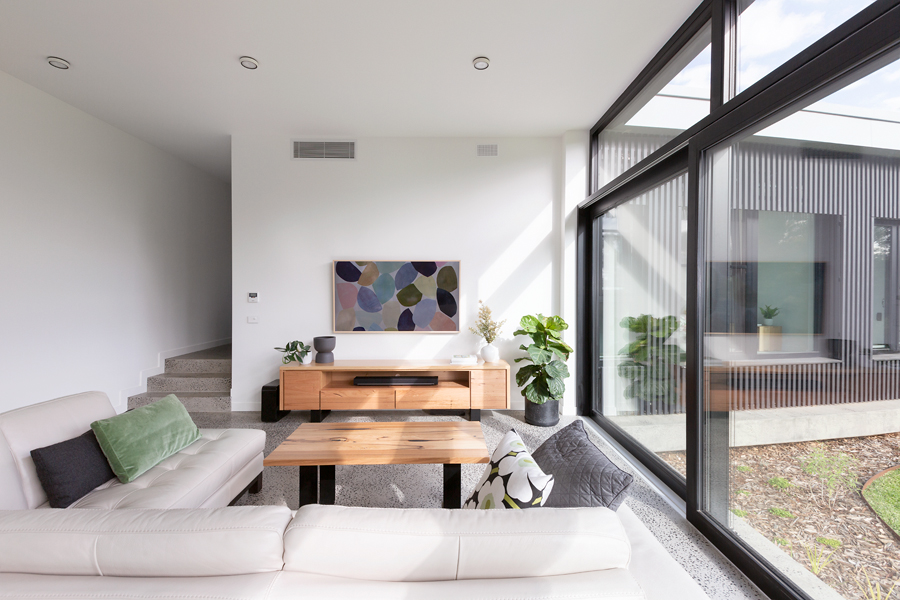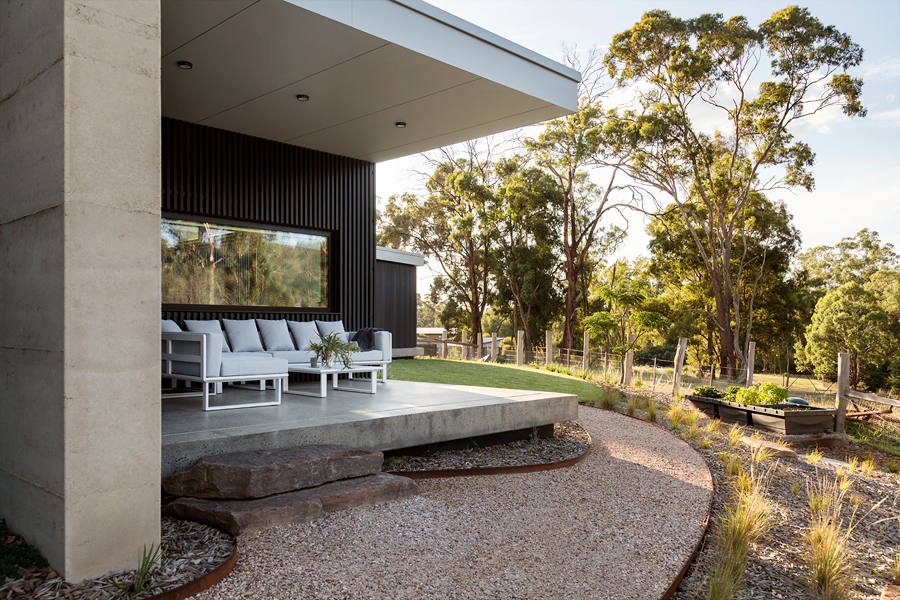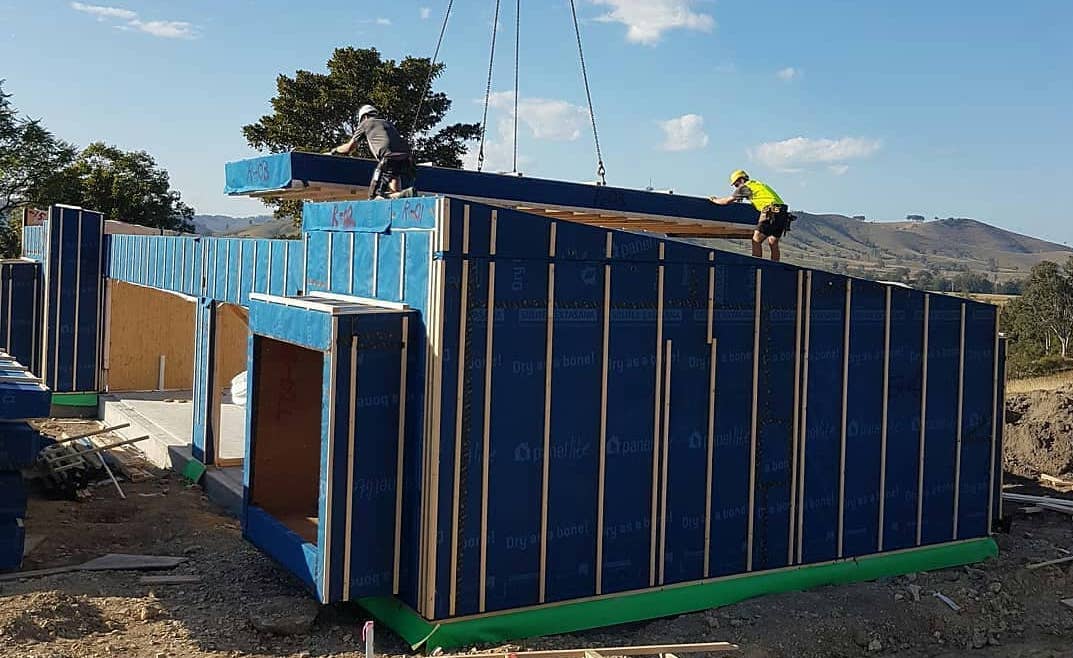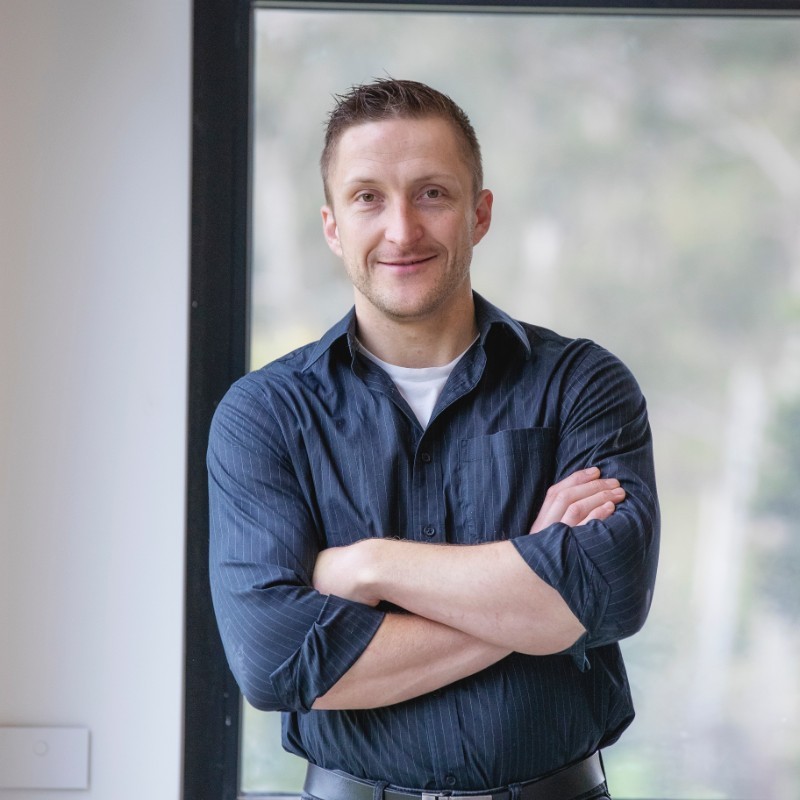Podcast: Play in new window | Download | Embed
When he first arrived in Australia from Germany, Burkhard Hansen thought that the local building industry resembled the “Wild West”. Far from being dissuaded, he has applied his training and knowledge to create a successful prefabricated building company that is now producing Passive House homes from his factory on the outskirts of Melbourne. Burkhard describes what CarbonLite does as, “simple, correct, fault free carpentry.”
It Does Get Cold Here
Like so many of my guests who have experienced living overseas, Burkhard expressed surprise at the typical Australian attitude to the local climate. He says that in Australia, people somehow “pretend that it doesn’t get cold here”. (I find the same here in for New Zealand.)
He recalls attempts to explain concepts like eliminating thermal bridging to experienced Australian builders, only to be told, “this is how we do things around here”. Burkard has rejected this mentality and is now proving there’s a market for fit-for-purpose housing.
The Apprentice’s Journey
Burkhard has good reason to be confident in his own knowledge and experience. To become a Master Carpenter in Germany means a number of years learning as an apprentice, followed by travelling and working as a ‘Journeyman’. I liken the Journeyman experience to the expectation of a surgeon who has to go through an overseas fellowship after their advanced training in order to become a consultant. It’s more than a rite of passage. The international exposure is valuable for life experience and humility.
The high bar of a German Master Carpenter means that the title is valued and respected.
Fit For Purpose
Instead of being fit for purpose, Burkhard says of many new homes in Australia, “You couldn’t get this more wrong if you tried”. And it’s not as though it’s a new problem. A similar situation has already occurred, with similar consequences, decades ago in Europe.
There’s an increasing demand to make our buildings more comfortable and energy-efficient. This is a good thing, and what occurred overseas years ago. If done without considering the science though, adding lots of insulation can lead to problems, especially when we also add things like impermeable materials.
Foil sarking on a building is like wearing a plastic jacket to keep your woolly jumper dry, explains Burkhard. It might keep some of the rain out, but it’ll also trap in a lot of moisture. The trapped moisture will stay there, harvest mould and make the occupants sick.
Burkhard suggests we should be using something more akin to a Gortex jacket for our houses instead of a plastic coat. This means using materials that are wind-resistant, water-resistant and vapour diffusion option.

Facts and Physics
We wouldn’t accept engineers to use guesswork for foundations or the structure of a building, yet most houses are put together with broad estimates of the likely performance. It is, however, possible to accurately predict the temperature of a building and how much it will cost to run. Tools like the Passive House Planning Package (PHPP) help designers identify and fix any potential weak spots before the building is built. PHPP is also incredibly useful for determining the relative benefit of different aspects. For example, how much insulation is enough, and how much better the performance will be when infiltration is minimised.
Energy Ratings
Energy ratings can be a distraction. A an energy rating is not an energy model. “There’s no logic in being able to offset single glazing with a water tank”, says Burkhard. Unfortunately ratings can mean that people think they’re doing the right thing, but miss some of the most important features for health, comfort and energy efficiency.
How Much does it Cost?
The question of cost always comes up. And rightly so. Houses are a huge investment. Burkhard stressed though that it’s vital to be clear what is being compared when discussing price. “You can’t compare a Mercedes Benz with a pair of rollerblades”. A Passive House is nothing like a standard Australian or New Zealand house built to minimum requirements.

And speaking of minimum requirements, Burkhard eloquently poses the question, “Since when is the minimum standard good enough for anything?” This is definitely something we should be asking ourselves in relation to the places we spend our time.
CarbonLite
Through his company CarbonLite, Burkhard is proudly producing fit for purpose, Passive House quality houses utilising prefabrication technology. This means they’re well ventilated, well-insulated, airtight and with minimal thermal bridges.
Burkhard sees this as going against the flow. I hope that he’s part of leading a change in direction.



Leave a Reply